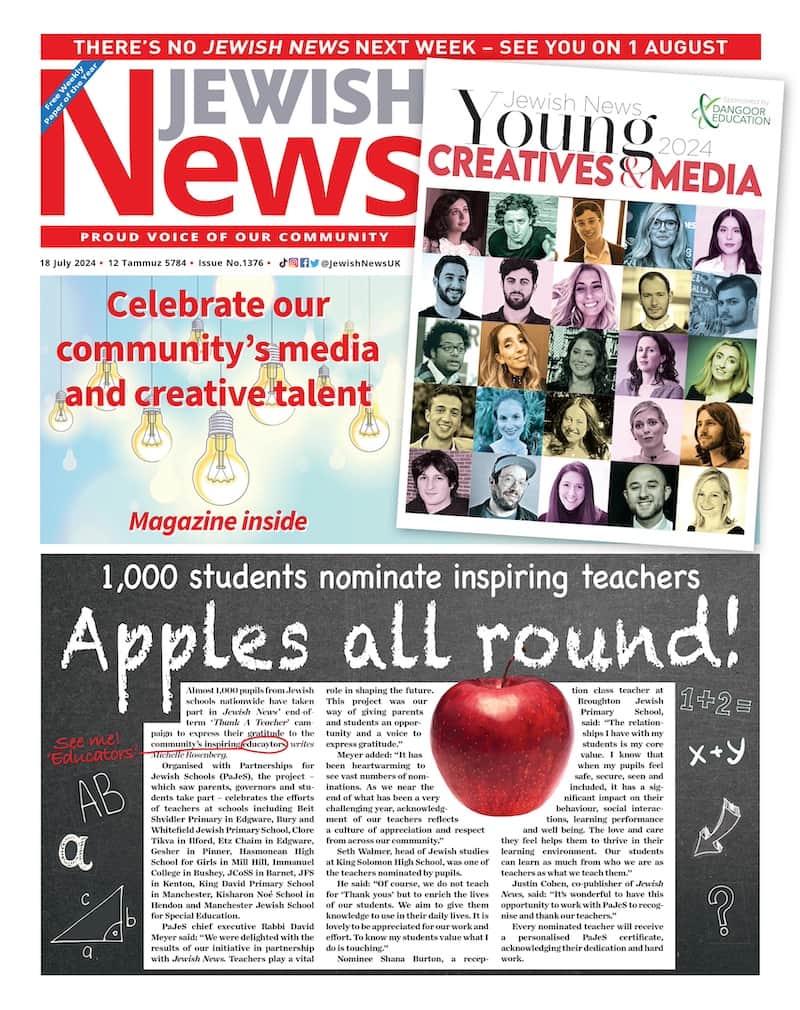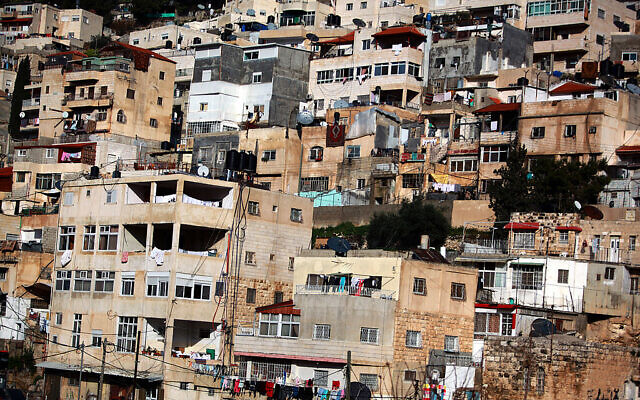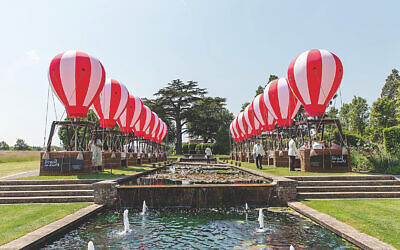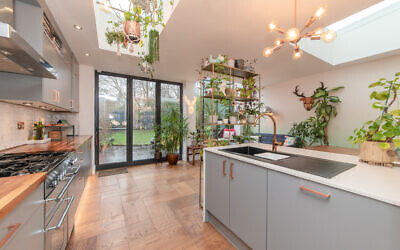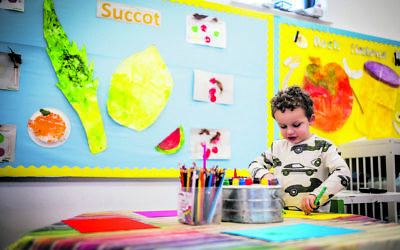OPINION: Silwan is invisible, yet in plain view to all of Jerusalem
New Israel Fund UK's Atira Winchester reflects on a visit to Silwan, home to 50,000 Palestinians and 700 Jews, where, she says, "forced evictions and demolitions are seen by the entire city of Jerusalem".
I’m writing this from the midday heat of Jerusalem. The room I’m working in is cool, green and spacious, located in Old Talpiot to the south east of the city.
It takes barely 10 mins to drive from here to Silwan in East Jerusalem, on the southern slopes of the Old City, but the reality between the two neighbourhoods couldn’t be more different.
I went out there with Ir Amim, an NIF grantee and one of our two 2022 Human Rights Award Winners. In their work to promote and advance a more equitable and stable Jerusalem they are working in the neighbourhood to halt evictions and demolitions and raise awareness about the situation in the Old City basin.
Silwan is an area of approximately 50,000 Palestinians (depending on where you mark its boundaries), one of Jerusalem’s oldest and poorest Palestinian neighbourhoods.
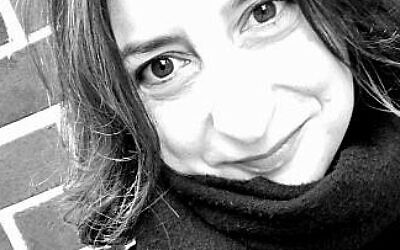
Silwan’s presence in Jerusalem dates from the era of the Bible, and has been an important part of agricultural and economic life in Jerusalem for centuries. Jewish settlement starting only relatively recently in the 20th century, with a small Yemenite Jewish population in the 20s and in the early 1930s. By 1936 they had left as a result of increasing tension between the Jewish and Palestinian population.
In the early 1990s state-funded Jewish settlement here began once more.
Jewish residents currently number around 700, but the relatively small number belie the presence of the Jewish settlement here which is increasingly tangible not only in the homes occupied by Jews but also in the footholds of governmental-backed institutions.
The settlement’s presence and growing impact is the result of exploitation of the Legal and Administrative Law of 1970 (which exclusively grants Jews the right to reclaim property in East Jerusalem lost in the 1948 war if they owned it previously) or the use of the Absentee Property Law (which gives Palestinian property to the State of Israel if the Palestinian owner fled the country in 1948 ).
In the tunnels under our feet, and in the planned cable car, a Jerusalem municipality-backed tourist attraction will effectively link the Old City to Ir David, strengthening the ring of Jewish presence in the circle around the old city, including Silwan, Har Hazayit and Ras Al Amud.
There is nothing at all here that describes what a visitor is in fact seeing. It is almost as if the area and its 50,000 Palestinians doesn’t exist
We start our tour half way up the road of what was historically known as Wadi Hilweh and has now been renamed by the municipality as Maalot Ir David – the ascent of the City of David.
A narrow path reveals a series of murals depicting Palestinian life, culture and aspirations.
One depicts the Siloam Pool Breichat Hashiloach, once one of the most beloved and central symbols of Silwan, now almost impossible for Palestinians to reach.
A short walk up is the Mercaz Ir David, The City of David National Park, now one of the most visited tourist attractions in Jerusalem, containing archaeological finds from the Bronze and Iron ages.
On paper this is just a neutral archaeological site, but the site articulates a solely Jewish historical narrative, including the contested notion of King David’s presence in Jerusalem and puts an ever expanding Jewish footprint in this Palestinian neighbourhood.
It is also run by Elad, commonly known as the Ir David Foundation, a right-wing, pro-settlement organisation aiming to strengthen exclusive Jewish connection to Jerusalem, all with the backing of the Israel Ministry of Tourism.
Just next door to the centre is The Sumreen family home. Since the 1990 they have been put under enormous pressure to sell up to further expand the City of David National Park and enterprise, using the absentee property law and other forms of legal pressure, but so far with no success.
Once inside The City of David National Park, a site that attracts nearly a million visitors every year, you can look over onto the densely populated neighbourhood of Silwan. In fact the site actively encourages it, with a sweeping outlook that takes in the stretch of the area. But there is nothing at all here that describes what a visitor is in fact seeing. It is almost as if the area and its 50,000 Palestinians doesn’t exist. There is a wilful blind spot, Silwan is invisible and yet in plain view.
And here lies the concept of I Witness Silwan, an intersectional mural project backed by Californian artist Susan Greene that paints multiple eyes on the external walls of the Silwan homes.
Visible from across the valley and from the City of David National Park, the project aims to demonstrate that the forced evictions, land grabs, demolitions, in this area, are all seen not only by the Silwan residents, but by the entire city, and – eventually — internationally.
The walk from this point in the City of David National Park through to Batan Al Hawa, a small neighbourhood in Silwan, is short and unremarkable. A couple of minutes through a narrow path and you’re there.
The day we visit is just three days after an assailant from Silwan opened fire on a bus near the Old City. Eight people were seriously injured, including a pregnant woman. The fear, distrust and alienation between the two communities is tangible, although neither are openly hostile.
But once in the heart of the neighbourhood the murals of eyes give way to full wall paintings on the sides of the homes, bursting into the space, and they are as moving and evocative as they are beautiful. A riot of colour depicts the dreams and aspirations of the Palestinian community: birds flying free, a blazing sun, flowers in the colours of the Palestinian flag.
As we ascend we are lucky to meet local Batan resident and activist Zuheir a-Rajabi who is deeply involved with Ir Amim’s work in the area. He is fighting the evictions in the neighbourhood and the demolitions.
His own brother’s house was demolished just last month, ostensibly because of a lack of planning for the structure (although planning permission is almost impossible to obtain). Zuheir was sprayed with tear gas during the demolition and still has issues with his vision.
We stay about 45 mins on this short stretch of road, walking up to the seven storey house of Jewish settlers called Beit Yonatan, named after Jonathan Pollard. The building was built for Jewish settlers without planning, but was retroactively approved by the State.
Movement to and from the house by the Jewish residents is almost exclusively with the accompaniment of armed guards, sometimes both at the front of a small group and at their rear. These guards are subsidised by the state which pays them a preferential rate for securing Jewish settlers in the east of the City.
The day we visit is just three days after an assailant from Silwan opened fire on a bus near the Old City. Eight people were seriously injured, including a pregnant woman. The fear, distrust and alienation between the two communities is tangible, although neither are openly hostile.
The riot of colour is an antidote to these strained relations. It forms a welcome relief to the chaos of the neighbourhood where roads and houses are built on top of each other like an unfinished game of Jenga.
Some of the graffiti is more challenging, with depictions of the desire for Palestinian ownership of the whole land of Israel, the West Bank and Gaza, but nowhere are the images violent or viscerally threatening, nor does it feel unsafe for us to walk unguarded in the neighbourhood.
On the mural inside a local children’s centre there are portraits of children with watermelon pieces, used to represent the Palestinian flag with its vibrant green, red, and black triangles. The theme is repeated elsewhere with poppies.
Some of the graffiti is more challenging, with depictions of the desire for Palestinian ownership of the whole land of Israel, the West Bank and Gaza, but nowhere are the images violent or viscerally threatening, nor does it feel unsafe for us to walk unguarded in the neighbourhood.
After catching up with Zuheir and Susan Greene, who is on site continuing the murals with her crew, we go back the way we came, or try to, but the path we stepped down is now flooded, overflowing from a tiny pool of water by the entrance of the street.
We consider walking through the stream, but it stinks of sewage, just another reality of life in this part of Silwan.
We take a different path and wind our way back into West Jerusalem.
A few days later I am on the Tayelet in the nearby Armon Hanatziv neighbourhood for a family event.
Below us they’re holding a Jewish wedding with the backdrop of Jerusalem, east and west, all seemingly at peace. It’s a beautiful moment, the sunset is glorious and the wedding singers have gorgeous, sonorous voices.
It’s difficult not to look on, soak it up, immerse yourself in their joy.
I sit above on a wall spellbound. As I look round I see I’m not alone. On my left are a number of Palestinians, a young woman in a hijab, a young man and an older woman, all glued to the sight.
Like me, they are transfixed. I wonder what they’re thinking as they look at the Jewish symbols of the chuppa, the wedding canopy, and hear the words ‘Od yishama barei Yehuda u’vhutzot yerushalayim’ – We will hear once again in the hills of of Judea and the courtyards of Jerusalem the sound of joy and merriment. I don’t want to assume that they are thinking of the injustices unfolding daily in this city.
I hope, like me, they see and relish its beautiful and human moments and believe this shared humanity can spread further than one wedding canopy on the slopes of this Jerusalem promenade, spilling into every corner of this contested and coveted city.
• Atira Winchester is NIF’s director of programming and content.

Thank you for helping to make Jewish News the leading source of news and opinion for the UK Jewish community. Today we're asking for your invaluable help to continue putting our community first in everything we do.
For as little as £5 a month you can help sustain the vital work we do in celebrating and standing up for Jewish life in Britain.
Jewish News holds our community together and keeps us connected. Like a synagogue, it’s where people turn to feel part of something bigger. It also proudly shows the rest of Britain the vibrancy and rich culture of modern Jewish life.
You can make a quick and easy one-off or monthly contribution of £5, £10, £20 or any other sum you’re comfortable with.
100% of your donation will help us continue celebrating our community, in all its dynamic diversity...
Engaging
Being a community platform means so much more than producing a newspaper and website. One of our proudest roles is media partnering with our invaluable charities to amplify the outstanding work they do to help us all.
Celebrating
There’s no shortage of oys in the world but Jewish News takes every opportunity to celebrate the joys too, through projects like Night of Heroes, 40 Under 40 and other compelling countdowns that make the community kvell with pride.
Pioneering
In the first collaboration between media outlets from different faiths, Jewish News worked with British Muslim TV and Church Times to produce a list of young activists leading the way on interfaith understanding.
Campaigning
Royal Mail issued a stamp honouring Holocaust hero Sir Nicholas Winton after a Jewish News campaign attracted more than 100,000 backers. Jewish Newsalso produces special editions of the paper highlighting pressing issues including mental health and Holocaust remembrance.
Easy access
In an age when news is readily accessible, Jewish News provides high-quality content free online and offline, removing any financial barriers to connecting people.
Voice of our community to wider society
The Jewish News team regularly appears on TV, radio and on the pages of the national press to comment on stories about the Jewish community. Easy access to the paper on the streets of London also means Jewish News provides an invaluable window into the community for the country at large.
We hope you agree all this is worth preserving.

